In this second article focusing on what our stats and data show us about a country in our service region, we look at Ireland and how it compares with countries of similar population in northern Europe.
Ahead of the RIPE NCC Member Lunch that takes place in Dublin on 31 March, and the RIPE NCC's particpation in the Internet Neutral Exchange (INEX) Association meeting the previous day, we take a look at what our various data are showing us about Ireland.
For the purposes of the article and where appropriate, the Irish data is compared to three other northern European countries that have comparable membership figures and similar populations to Ireland (within one million people). Ireland's neighbour the UK is considerably larger in terms of both LIR figures (1,788) and population, and it will be the subject of its own article later in 2017.
Please note that this article shows a snapshot of the situation as seen on 21 March 2017. However, in most cases we also provide a link to the most up-to-date information.
Ireland at a glance
| Number of ASNs assigned | 228 |
| Number of Local Internet Registries | 193 |
| Number of IPv4 allocations | 366 |
| Number of IPv4 assignments | 85 |
| Number of IPv4 addresses allocated | 5,309,696 |
| Number of /22s allocated from the last /8 | 147 |
| Number of LIRs with IPv6 allocations | 141 |
| Size of IPv6 allocations (/32s) | 691 |
| Number of IPv6 assignments | 7 |
| RPKI with route object authorisation (ROAs) | 26 |
Membership growth
In Figure 1, you can see the growth of the number of Local Internet Registries (LIRs) in Ireland and three other northern European countries between 2010 and 2017. As of March 2017, there are 193 LIRs registered in Ireland.
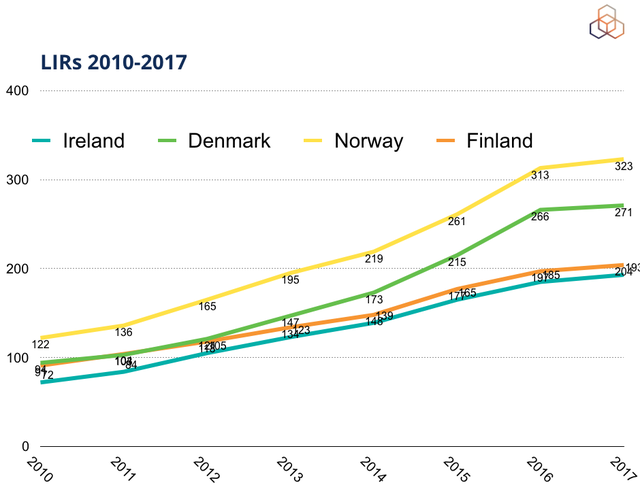
Figure 1: Number of LIRs in Ireland, Denmark, Norway and Finland from 2010-2017
For comparison, Figure 2 shows the growth in the number of all LIRs registered with the RIPE NCC since 2008. There are currently over 15,500 LIRs registered with the RIPE NCC. Note that the numbers for 2017 only contain data from January - March 2017.
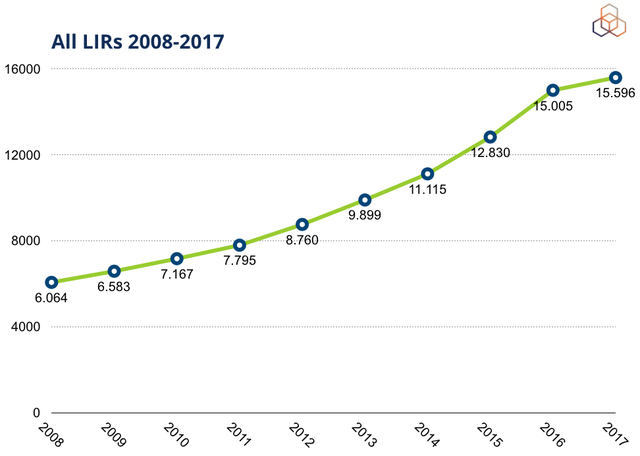
Figure 2: Number of all LIRs in the RIPE NCC service region from 2008-2017
The next figure shows the age of the LIRs in Ireland. The well-established LIRs that are 10 years and older make up the biggest cohort of LIRs, although this is nearly matched by those LIRs that have joined the RIPE NCC in the last two years. Figure 3B below shows the age of all LIRs.

Figure 3: Age of LIRs in Ireland
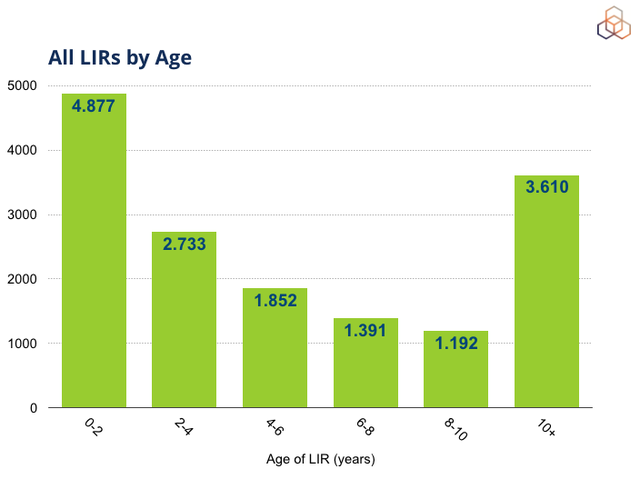
Figure 3B: Age of All LIRs
IPv6 Deployment in Ireland
IPv6 RIPEness is a rating system that awards stars to LIRs in the RIPE NCC service region depending on indicators of IPv6 preparedness. Stars are awarded for:
- Having an IPv6 allocation or assignment from the RIPE NCC
- Making the IPv6 prefix visibility in the Routing Information Service (RIS)
- Having a route6 object registered in the RIPE Database
- Having reverse DNS delegation set up for the IPv6 allocation
Figure 4 shows the situation in Ireland. 131 LIRs (68% of all LIRs in the country) have an IPv6 allocation and 72 of those LIRs have done something with that allocation. 59 LIRs do not have an IPv6 allocation yet.
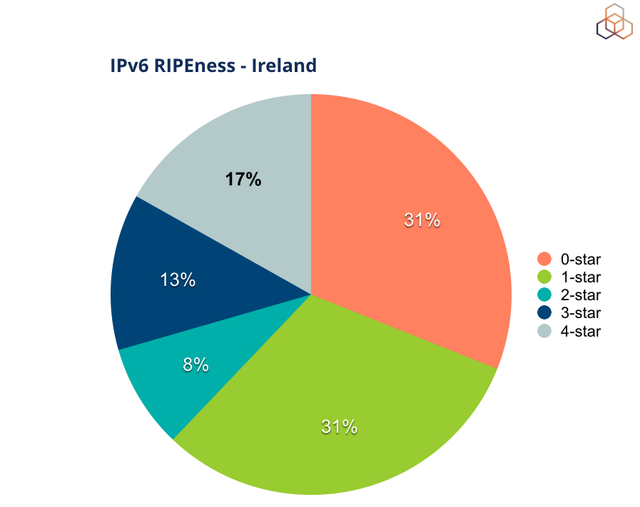
Figure 4: IPv6 RIPEness in Ireland
In Figure 5, you can see the situation for all LIRs in the RIPE NCC service region. 75% of all LIRs have an IPv6 allocation, of which around 46% have started using it one way or another (by meeting one of the criteria listed above).
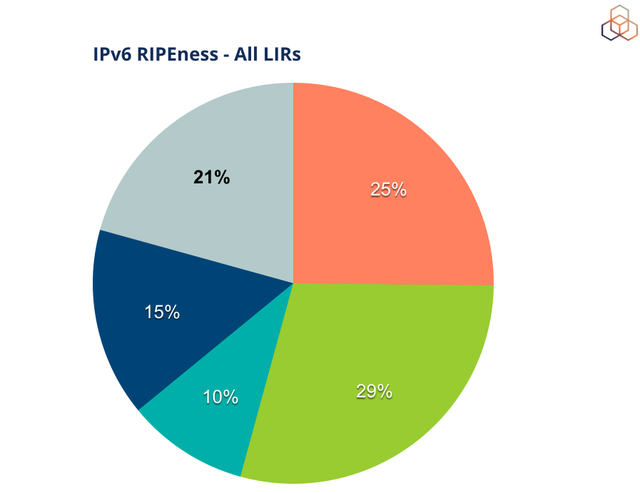
Figure 5: IPv6 RIPEness for all LIRs
In Figure 6, we show the number of ASes announcing one or more IPv6 prefixes in Ireland, Denmark, Norway and Finland. In Ireland, 28.8% of ASes announce IPv6 to the global routing table. You can find the current status of these countries using the IPv6-Enabled Networks tool. This tool also allows you to search for other countries or regions worldwide.
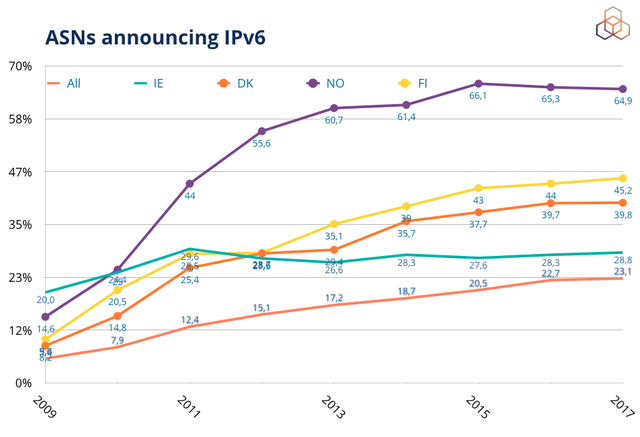
Figure 6: ASes announcing one or more IPv6 prefixes in Ireland, Denmark, Norway and Finland
Country Routing Statistics
Figure 7 visualises the development of the IPv4 and IPv6 prefixes and ASes in Ireland over time.
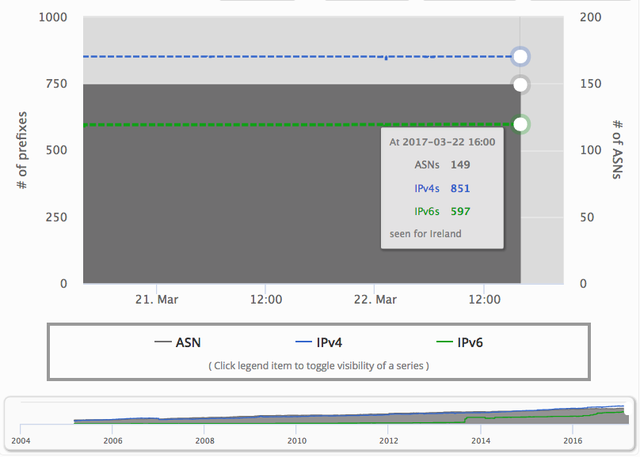
Figure 7: RIPEstat country routing statistics in Ireland
You will notice that the number of IPv6 prefixes and the number of ASNs in this widget are not consistent with the number shown in the table at the top of this article. The table shows those allocations and assignments made by the RIPE NCC to organisations registered in Ireland. The RIPEstat widget on the other hand shows what's actually happening in the real world: The 366 IPv4 allocations made by the RIPE NCC have been de-aggregated into 851 individual prefixes that are announced by 149 ASes (instead of the 228 ASes assigned by the RIPE NCC to organisations in Ireland).
You can see the current status in the RIPEstat country routing widget. You can also use that widget to compare multiple countries.
RIPE Atlas
RIPE Atlas is a global network of probes that measure Internet connectivity and reachability, providing an unprecedented understanding of the state of the Internet in real time. The more probes that are distributed and connected worldwide, the more useful data can be collected that can then be used by network operators and researchers to analyse the state of the Internet.
The embedded RIPEstat widget below shows the number of RIPE Atlas probes in the region. Green dots indicate connected probes, yellow dots show disconnected probes and red dots indicate those that are abandoned (i.e., not connected for more than three months).
If you have a RIPE Atlas probe, please double-check it is connected properly so that the community can benefit from the data it produces.
RIPEstat widget will be rendered here
Figure 8 shows the actual number of RIPE Atlas probes in Ireland and the other countries we've chosen to compare it with.

Figure 8: Number of RIPE Atlas probes in Ireland, Denmark, Norway and Finland
Participation at the General Meeting
The General Meeting (GM) is the forum where, twice a year, RIPE NCC members can register to have their say on how the RIPE NCC operates. All members are encouraged to register and cast their vote on such matters as the RIPE NCC Charging Scheme and who will represent them on the RIPE NCC Executive Board.
At the upcoming GM on 22 May 2017, there will be an election for three seats on the Executive Board and members will vote on the Charging Scheme for 2018. Electronic voting and remote participation options are available to all members.
Almost 1,200 members registered for the last GM in October 2016. Of these, 14 members from Ireland registered to participate. Figure 9 shows the registration numbers for Ireland since electronic participation became available in 2014.

Figure 9: General Meeting registrations from Ireland since Nov 2014
Networking Communities in Ireland
The RIPE NCC actively supports the development of local networking communities in its service region. We believe that strong local communities make a significant contribution to the Internet in the countries in which they're based as well as the wider Internet community.
We list some of the Irish communities here - if there are others you feel should be included, let us know in the comments below.
INEX
With over 100 members, the Internet Exchange Point (IXP) INEX brings together a significant number of networking and industry professionals from Ireland and around the World. With quarterly meetings for the INEX members and industry representatives, there are great opportunities for networking and getting first hand information on developments.
iNOG
The Irish Network Operators Group (iNOG) is building an inclusive, open, and healthy Community of Practice around all aspects of network engineering. iNOG is re-birthing local community around network engineering and learning. The group is focused on diversity, sharing, and of course connecting and having fun.
Conclusion
As we add more more country-based analysis in the months to come, we will talk to members and see what data is interesting for them and see if we can add further information. Where possible we will also add comparisons with neighbouring countries and the region as a whole. If there is other information you'd like to see, please let us know in the comments below.

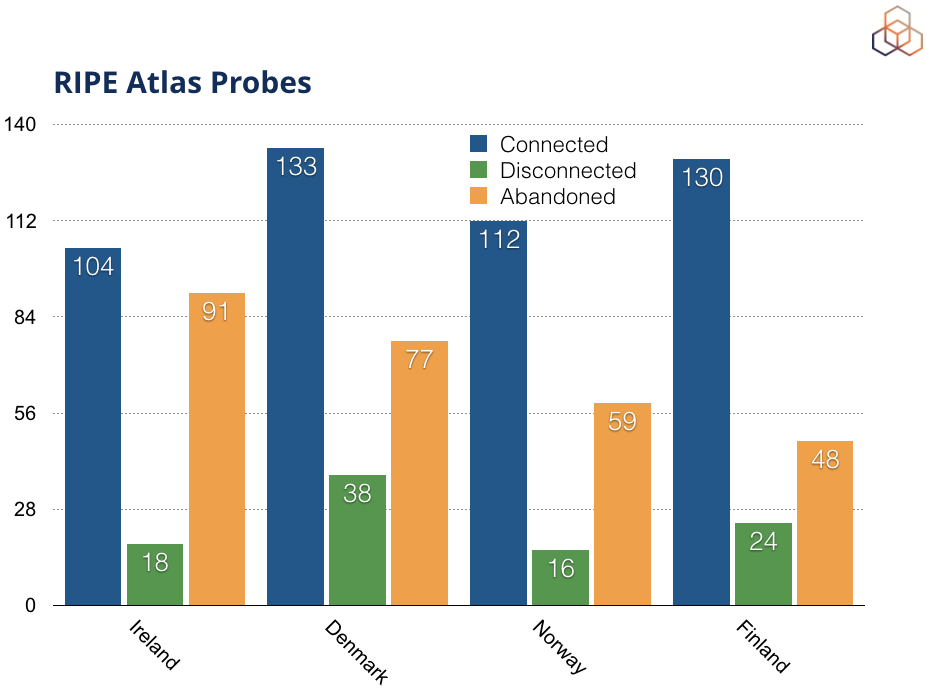
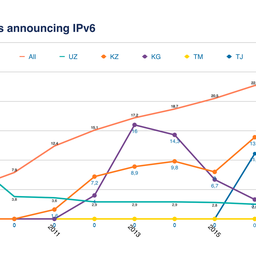

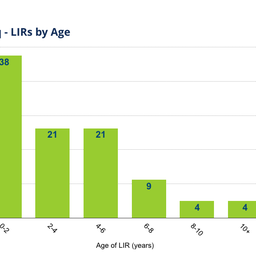
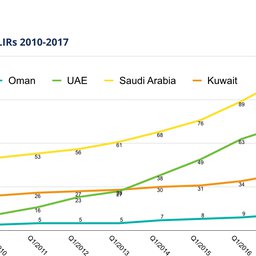



Comments 0
The comments section is closed for articles published more than a year ago. If you'd like to inform us of any issues, please contact us.